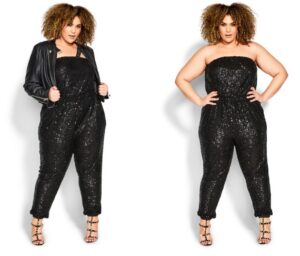Wear a swimsuit or rash guard under a wetsuit to prevent skin irritation and improve the wetsuit’s fit. Choosing the right clothing to wear under a wetsuit can make all the difference when it comes to comfort and functionality.
Contrary to popular belief, you should wear a swimsuit or a rash guard under a wetsuit for a few reasons. First, it helps to prevent skin irritation caused by the wetsuit rubbing on your skin. Additionally, wearing an extra layer under the wetsuit can help improve the wetsuit’s fit, making it easier to put on and take off.
However, avoid wearing cotton or any other material that can retain water, as it will make you feel cold. In this article, we will be looking at what to wear under a wetsuit to ensure a comfortable and enjoyable aquatic experience.

Credit: www.220triathlon.com
Types Of Wetsuits
Wearing the right attire under your wetsuit can make a difference in your comfort level and performance during your aquatic activities. With so many types of wetsuits available on the market, each with its unique specifications, it can be challenging to determine what to wear under your wetsuit.
In this blog post, we’ll discuss the different types of wetsuits and what to wear underneath to ensure you’re comfortable and safe in the water.
Full-Length Wetsuits
Full-length wetsuits are among the most popular types of wetsuits and offer the most protection. These wetsuits cover the entire body, including the arms and legs, providing excellent insulation and protection from the cold water. Here’s what to wear underneath a full-length wetsuit:
- Synthetic underwear or rashguard that wick moisture away from your skin.
- Compression shorts or pants that provide extra insulation and prevent chafing.
- Neoprene boots, socks, or neoprene gloves, depending on the water’s temperature.
Spring Suits Or Shorties
Spring suits, or shorties, are wetsuits that provide less coverage than full-length wetsuits. They are ideal for watersports in warmer climates or during the summer season. Here’s what to wear under a spring suit or shortie.
- Rashguard or synthetic underwear to wick moisture away from your skin.
- A bikini or board shorts if you prefer more coverage.
- Neoprene boots or socks, depending on the water temperature.
Long John Wetsuits
Long john wetsuits are sleeveless wetsuits that cover the legs and torso. They are ideal for watersports in moderate water temperatures in which you don’t need full arm coverage. Here’s what to wear underneath a long john wetsuit:
- Rashguard or synthetic underwear to wick moisture away from your skin.
- Compression shorts or pants that provide extra insulation and prevent chafing.
- Neoprene boots or socks, depending on the water temperature.
Farmer John/Jane Wetsuits
Farmer john/jane wetsuits, or two-piece wetsuits, consist of a vest and pants that offer less coverage than full-length wetsuits but more than long john wetsuits. They are ideal for colder water temperatures where you need more warmth but still desire mobility.
Here’s what to wear under a farmer john/jane wetsuit:
- Rashguard or synthetic underwear to wick moisture away from your skin.
- Compression shorts or pants that provide extra insulation and prevent chafing.
- Neoprene boots, socks, or neoprene gloves, depending on the water temperature.
Proper attire under your wetsuit can make a significant difference in your comfort level and performance during your water activities. Make sure to consider the type of wetsuit you’re wearing and the water temperature before choosing what to wear underneath.
By following these guidelines, you can ensure you’re comfortable and safe while enjoying your aquatic adventures.
What To Look For In Wetsuit Undergarments
What to wear under a wetsuit: what to look for in wetsuit undergarments
When it comes to water sports or activities like diving or surfing, wetsuits are an essential item of clothing. However, choosing the right undergarments for your wetsuit can make the whole experience a lot more comfortable. Here’s what you need to consider when looking for wetsuit undergarments.
Material
The material of your wetsuit undergarments plays a crucial role in both comfort and warmth. Here are a few things to look for:
- Choose a material that wicks moisture away from the skin to keep you dry and prevent chafing.
- Opt for a fabric that has some stretch to ensure a comfortable and snug fit. Neoprene is a popular material choice.
- Consider the thickness of the material to ensure you’re wearing the right amount of protection for the water temperature.
Thickness
The thickness of your wetsuit undergarments is essential in keeping you warm and comfortable. Here’s what you should know:
- The thicker the material, the warmer you’ll be. However, thicker materials can also reduce flexibility and range of motion.
- Consider the water temperature and choose the appropriate thickness accordingly. For example, a 3mm thickness might be ideal for warmer waters, while a 5mm thickness could be better suited for cold water dives.
- Keep in mind that different parts of the body might need varying thicknesses. For example, your core may need more warmth than your arms and legs.
Style
The style of your wetsuit undergarments can also have an impact on your comfort and protection. Here are a few things to keep in mind:
- Choose a style that fits well and doesn’t bunch up or cause discomfort under your wetsuit.
- Look for a design that allows for a full range of motion, so you can move freely while you’re in the water.
- Consider additional features like reinforced knees or built-in hoods for added warmth and protection.
Selecting the right wetsuit undergarments is crucial to your comfort and enjoyment during water activities. Keep in mind the material, thickness, and style when choosing undergarments, and you’ll be well-equipped for your next adventure.
Must-Have Wetsuit Undergarment Essentials
Are you considering going for a swim, surf, or dive but not quite sure what to wear under a wetsuit? Worry not, as we’ve got you covered! A comfortable wetsuit undergarment is a must-have, as it can make a significant difference in your overall swim or dive experience.
Here’s a rundown of some of the essentials you need to wear under a wetsuit.
Rash Guards
Rash guards are a vital piece of clothing to wear under a wetsuit, especially if you have sensitive skin. They offer protection against skin irritation caused by the friction between the wetsuit and your skin, as well as the harmful uv rays from the sun.
Here are some of the benefits of wearing a rash guard under a wetsuit.
- Prevents rashes and skin irritation
- Provides extra insulation on cold water days
- Protects against uv radiation
- Dries quickly, allowing for a comfortable swim or surf experience
Booties
Wearing booties under a wetsuit provides protection for your feet against rough surfaces and sharp objects you may encounter while surfing or diving. Booties also offer insulation, keeping your feet warm during cold water days. Here are some of the advantages of wearing booties under a wetsuit.
- Protects feet from cuts and scratches
- Provides insulation to keep feet warm
- Gives better traction when walking on slippery surfaces
- Offers comfort and support while walking on uneven terrain
Gloves
Gloves also play a vital role when it comes to what to wear under a wetsuit. They protect your hands from blisters, cuts, and scratches, while also providing insulation to keep your hands warm during cold water days. Here are some of the benefits of wearing gloves under a wetsuit.
- Offers protection for hands against blisters, cuts, and scratches
- Provides extra insulation to keep hands warm
- Gives better grip for holding onto surfboards or other equipment
- Helps maintain dexterity and flexibility in hands and fingers while in the water
Hood
A hood is an essential piece of clothing to wear under a wetsuit, especially during cold water days. The head is one of the areas where heat loss occurs the most, and wearing a hood can help retain heat and keep your head warm.
Here are some of the advantages of wearing a hood under a wetsuit.
- Prevents heat loss from the head, keeping you warm
- Minimizes the risk of ear infections caused by cold water
- Provides additional protection for the neck and ears
- Offers comfort and support for the head
Wearing appropriate undergarments under a wetsuit can significantly enhance your swimming or diving experience. Rash guards, booties, gloves, and hoods are must-have items that provide protection, insulation, and comfort, making your swim or dive a lot more enjoyable. Make sure to invest in the right undergarments to suit your needs and ensure a great experience.
Layering Options For Extra Warmth
Wetsuits are often not enough to keep you warm in cold water. Layering is essential to maintain body temperature and stay comfortable. Here are some layering options that you can wear under a wetsuit to add extra warmth:
Wetsuit Vests
Wetsuit vests are sleeveless tops made of neoprene material that cover your torso. They are ideal for adding an extra layer of insulation to your core, reducing the loss of body heat. You can wear a wetsuit vest under your wetsuit or alone, depending on the water and air temperature.
Some key benefits include:
- Wetsuit vests come in different thicknesses for various temperature ranges.
- They provide additional buoyancy for better swimming and surfing experience.
- You can choose between front or back zipper suits for easy wearing and taking off.
Neoprene Shorts
Neoprene shorts are designed to provide warmth to your upper legs while retaining mobility. They extend from your waist to mid-thigh and can be worn alone or combined with wetsuit leggings. Some key benefits include:
- They are comfortable and flexible, fitting snugly around your waist.
- Neoprene shorts are perfect for water sports like kayaking or stand-up paddleboarding.
- They offer great thermal protection without being bulky.
Neoprene Tights
Neoprene tights are similar to neoprene shorts, except they cover your legs entirely. They are perfect for cold-water activities like surfing or diving, where prolonged exposure to cold water can sap your body heat. Some key benefits include:
- They come in various thicknesses for different temperature ranges.
- They provide an additional layer of thermal insulation against the cold water.
- Neoprene tights provide a snug and comfortable fit without being too restrictive.
Adding layers under your wetsuit can keep you warm and comfortable in the water. Choose one or a combination of the above options based on your activity and water temperature to enhance your wetsuit’s performance.
Caring For Your Wetsuit Undergarments
Wetsuits are popular among surfers, divers, and swimmers and are essential to keep them warm and protected. However, wearing a wetsuit directly on the skin can be uncomfortable and cause chafing. Wearing undergarments can make wearing wetsuits more comfortable. Here are some key points you need to know about caring for your wetsuit undergarments.
- Wash your wetsuit undergarments frequently: After each use, rinse your undergarments with fresh water and let them air-dry as soon as possible.
- Use a mild detergent: Use a mild detergent to clean your wetsuit undergarments such as baby shampoo or wetsuit shampoo. Avoid using fabric softeners as they can damage the fabric and reduce its effectiveness.
- Avoid using hot water: Never use hot water to wash your wetsuit undergarments as hot water can damage the fabric and cause shrinkage.
- Do not dry clean or iron: Do not dry clean or iron your wetsuit undergarments as it can damage the fabric and reduce its effectiveness.
- Store properly: Store your wetsuit undergarments in a cool, dry place away from direct sunlight. Do not store them in a damp or wet area as it can lead to mildew and bacteria growth.
- Check for tears and holes: Always check your wetsuit undergarments for tears and holes before using them. If you find any tears, repair them immediately to avoid further damage.
Having undergarments under your wetsuit can provide an extra layer of warmth, comfort, and protection. Following these simple care instructions can help extend the life of your wetsuit undergarments and keep them in good condition for a long time.
Frequently Asked Questions For What To Wear Under A Wetsuit
What Is The Purpose Of Wearing Something Under A Wetsuit?
Wearing something under a wetsuit is important for hygiene, warmth, and comfort. The right choice of undergarments can prevent skin irritation and help regulate body temperature while in the water.
What Are Some Suitable Clothing Options To Wear Under A Wetsuit?
Lightweight and moisture-wicking clothing such as rash guards, dive skins, or synthetic base layers are ideal choices. Avoid cotton or thick materials as they retain moisture and can make you feel colder while out of the water.
Can I Wear A Swimsuit Under My Wetsuit?
It is possible to wear a swimsuit under a wetsuit, but it’s not recommended. The seams, fabric, and design of swimsuits are not optimized for use underneath a wetsuit. Additionally, wearing a swimsuit can cause discomfort and chafing.
Should I Wear Underwear Under My Wetsuit?
It is not necessary to wear underwear under a wetsuit. The wetsuit material acts as a second skin, providing enough protection and coverage. In fact, wearing underwear under a wetsuit can lead to discomfort and irritation.
Is It Okay To Wear Socks Under A Wetsuit?
Wearing socks under a wetsuit is a personal preference. If you’re wearing diving boots, you don’t need socks. If you’re wearing surf boots or booties, socks can provide extra warmth and comfort. Make sure your socks don’t have any thick seams that can cause discomfort or restriction of movement.
Conclusion
What you wear under a wetsuit can make all the difference in your comfort and performance. From choosing the right fabric to ensuring a snug fit, we’ve covered everything you need to know to make the most of your aquatic adventure.
Remember, a wetsuit layering system is all about balance. Too little and you risk becoming hypothermic, too much and you’ll overheat. So take the time to experiment with different options until you find what works best for you. Whether you opt for neoprene jackets, rash guards, compression shorts or swim tights, just make sure you feel confident, comfortable, and ready to take on any water sport challenge.
Now go ahead and enjoy your time in the water!





